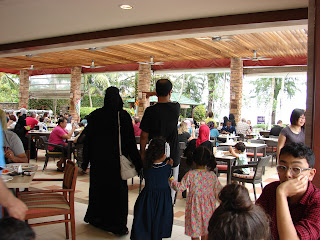 The Malaysian island of Penang is on several lists of great places people should visit during their lifetime; and, besides Number One on Forbes’ list of budget places to visit it is second on CNN’s list of “The 17 Best Places to Visit in 2017.” It is easy to see why. The island has a myriad of different things to do from exploring the UNESCO Heritage City of Georgetown to a walking tour through the new Entopia Butterfly Farm to parasailing over the Straits of Malacca.
The Malaysian island of Penang is on several lists of great places people should visit during their lifetime; and, besides Number One on Forbes’ list of budget places to visit it is second on CNN’s list of “The 17 Best Places to Visit in 2017.” It is easy to see why. The island has a myriad of different things to do from exploring the UNESCO Heritage City of Georgetown to a walking tour through the new Entopia Butterfly Farm to parasailing over the Straits of Malacca. I find the island’s heterogeneous population which is highly diverse in ethnicity, culture, language and religion, fascinating. In 1786 Captain Francis Light landed on the shore of Penang making it Britain’s first settlement in SE Asia. English is a compulsory subject in Malaysian schools. Today the island is about 40% Malay, 40% Chinese and 10% Indian with a variety of other groups making up the rest.
John and I were at the Holiday Inn Resort for Chinese New Year
which the hotel celebrated with firecrackers, Lion Dance, and the traditional Prosperity Toss. Chinese New Year begins with cymbals and big drum creating a lot of noise to drive out any bad spirits. A Prosperity Toss is a plate of colorful veggies, fish, and noodles that people, using their chopsticks, toss in the air while shouting “Loh Hey”
which literally means to 'move upwards'. It is symbolic of the wish for fortunes to grow during the coming year. With such a diverse clientele the chefs need to prepare food to suit all their guests. All the food is halal (prepared according to Muslim guidelines). The breakfast is impressive: eggs, pancakes, grilled tomatoes, cheese, soups, salads, fruits, bread pudding, curries, rice, and even a fava bean dish called foul which was very good – something for everyone.
 Penang is a honeymoon destination for Saudi couples and a winter getaway for Europeans. There are women in abayas, some with face veils, mixed with guests clad in a variety of other outfits including saris and hijabs. Usually it is only the women who are so attired but there is an occasional male in a dishsdasha.
Penang is a honeymoon destination for Saudi couples and a winter getaway for Europeans. There are women in abayas, some with face veils, mixed with guests clad in a variety of other outfits including saris and hijabs. Usually it is only the women who are so attired but there is an occasional male in a dishsdasha.There are Europeans in itsy-bitsy bikinis and Arab women in swimsuits that covered them completely except for face, hands and feet; some are very colorful. One young mother had on a bright pink Islamic-approved bathing suit. It seemed to dry quickly and then it was her street outfit. The Islamic women are not the shrinking violets that some perceive them to be. They went swimming, parasailing,
and banana-boating like everyone else. What I did notice was that, other than the newly-weds, the Muslims travel in family groups and in the evening the family would gather on the lawn together chatting, playing games, and smoking the hookah. They also made use of the children’s play center and game room. The Europeans were mostly elderly couples.
I make a point of greeting the people who are in the elevator with me. The Saudi ladies responded in perfect American English. It seemed that the men were less conversant in English which I found interesting. Shopping seemed to be the thing to do late in the evening – not for me. The night market on the street in front of the hotel extends for a mile or more beyond the hotel with kiosks selling an amazing variety of things from T-shirts to jewelry to food.





